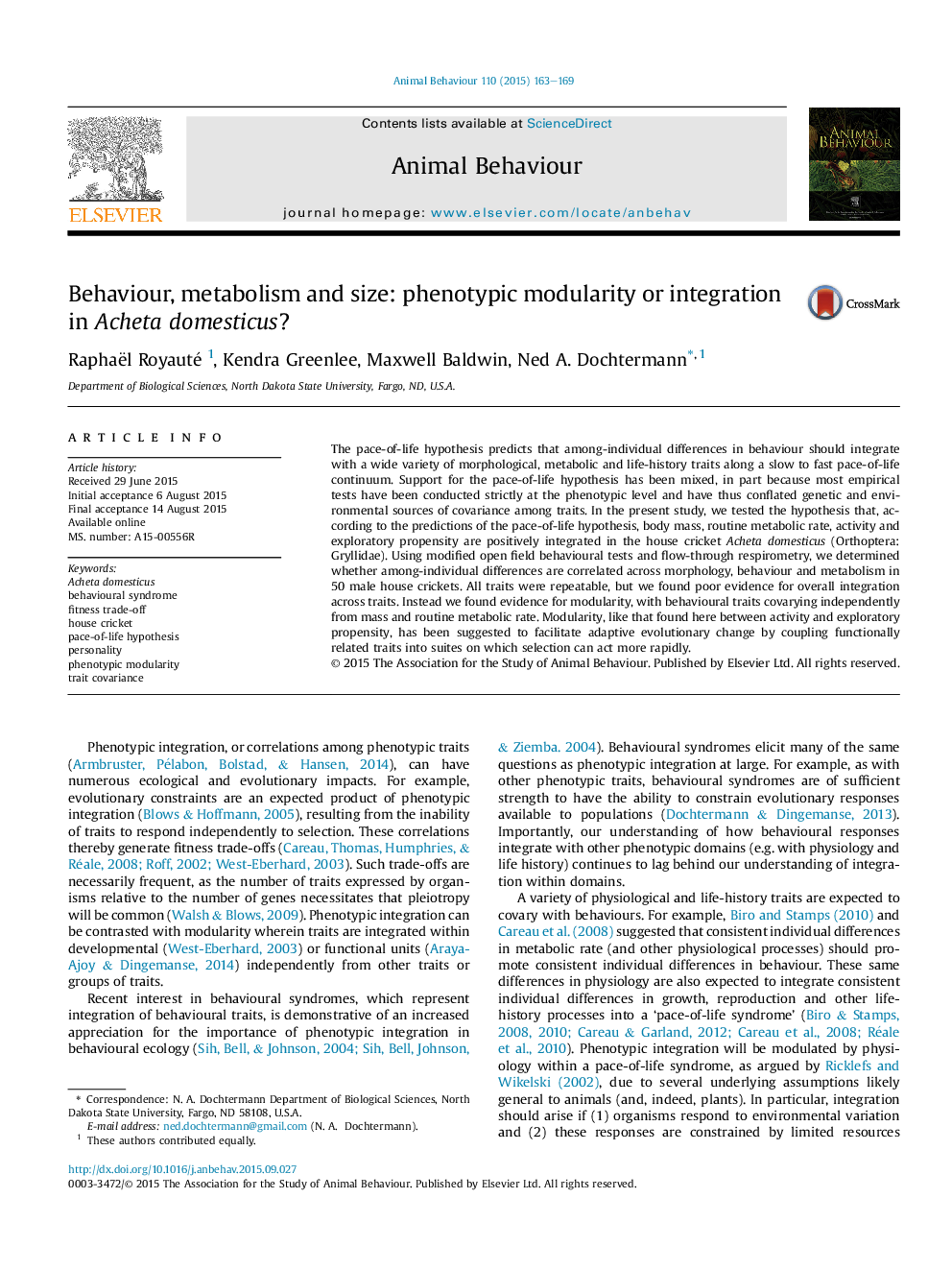| Article ID | Journal | Published Year | Pages | File Type |
|---|---|---|---|---|
| 8489542 | Animal Behaviour | 2015 | 7 Pages |
Abstract
The pace-of-life hypothesis predicts that among-individual differences in behaviour should integrate with a wide variety of morphological, metabolic and life-history traits along a slow to fast pace-of-life continuum. Support for the pace-of-life hypothesis has been mixed, in part because most empirical tests have been conducted strictly at the phenotypic level and have thus conflated genetic and environmental sources of covariance among traits. In the present study, we tested the hypothesis that, according to the predictions of the pace-of-life hypothesis, body mass, routine metabolic rate, activity and exploratory propensity are positively integrated in the house cricket Acheta domesticus (Orthoptera: Gryllidae). Using modified open field behavioural tests and flow-through respirometry, we determined whether among-individual differences are correlated across morphology, behaviour and metabolism in 50 male house crickets. All traits were repeatable, but we found poor evidence for overall integration across traits. Instead we found evidence for modularity, with behavioural traits covarying independently from mass and routine metabolic rate. Modularity, like that found here between activity and exploratory propensity, has been suggested to facilitate adaptive evolutionary change by coupling functionally related traits into suites on which selection can act more rapidly.
Related Topics
Life Sciences
Agricultural and Biological Sciences
Animal Science and Zoology
Authors
Raphaël Royauté, Kendra Greenlee, Maxwell Baldwin, Ned A. Dochtermann,
